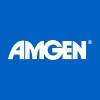
A Safety and Efficacy Study of Pracinostat and Azacitidine in Patients With High Risk Myelodysplastic...
Myelodysplastic SyndromesThis is a Phase 2, two-stage study of the safety and efficacy of pracinostat in combination with azacitidine in patients with IPSS-R high and very high risk myelodysplastic syndrome (MDS) who are previously untreated with hypomethylating agents (HMAs). Enrollment in this study will be limited to high/very high risk MDS because this group represents the highest unmet need, with median survival of less than 18 months. Stage 1a will be conducted as an open-label single arm in up to 40 subjects to assess if this regimen with a lower pracinostat dose results in a discontinuation rate that meets a predefined threshold and in efficacy that justifies expansion of enrollment into Stage 1b. A discontinuation rate of approximately ≤10% in Stage 1a, a rate comparable to that observed with azacitidine alone in study MEI-003 (NCT01873703), supports expansion into Stage 1b. Stage 1b will be conducted as expansion of stage 1a. Approximately 20 additional subjects will be enrolled. Study drugs should be continued until disease progression or intolerable toxicity. It is important to note that the median time to achieving a response with azacitidine alone is 4 to 5 months. Furthermore, the median time to achieving a Complete Response (CR) in study MEI-003 (NCT01873703) was 4 cycles. Therefore, early (<6 months) discontinuation of trial therapy for 'no response' should be avoided. The Medical Monitor should be contacted prior to discontinuing a subject from the study to discuss the rationale for discontinuation.

Safety, Tolerability, Pharmacokinetics and Efficacy of AMG 397 in Subjects With Selected Relapsed...
Multiple MyelomaAcute Myeloid Leukemia5 moreEvaluate the safety and tolerability of AMG 397. Estimate the maximum tolerated doses (MTDs) and/or biologically active doses.

Nivolumab With Chemotherapy in Refractory MDS
Myelodysplastic SyndromesThere is evidence of involvement of checkpoint pathways, including PD-1, in the pathogenesis and resistance of myelodysplastic syndrome (MDS). However monotherapy with checkpoint inhibitors was ineffective in a number of studies, indicating the presence of several mechanisms of resistance. This pilot study evaluates the safety and preliminary efficacy of nivolumab combination with currently existing treatments in MDS patients who failed at least one line of therapy. The study evaluates if there is a combination which induces objective responses.

Irradiated Donor Cells Following Stem Cell Transplant in Controlling Cancer in Patients With Hematologic...
Acute Lymphoblastic LeukemiaAcute Myeloid Leukemia in Remission17 moreThis pilot clinical trial studies the side effects of irradiated donor cells following stem cell transplant in controlling cancer in patients with hematologic malignancies. Transfusion of irradiated donor cells (immune cells) from relatives may cause the patient's cancer to decrease in size and may help control cancer in patients receiving a stem cell transplant.

Efficacy and Safety of Roxadustat for Treatment of Anemia in Participants With Lower Risk Myelodysplastic...
Primary MDS (Very LowLow or Intermediate IPSS-R With <5% Blasts)The purpose of this study is to determine whether FG-4592 is safe and effective in the treatment of anemia in participants with lower risk MDS and low red blood cell transfusion burden.

Study of Decitabine Induction Prior to Allogeneic Hematopoietic Cell Transplant in Newly Diagnosed...
Myelodysplastic SyndromeAllogeneic blood stem cell transplant remains the only potential curative treatment for myelodysplastic syndromes (MDS) to date. Pre-transplant induction chemotherapy with leukemia-type regimens is associated with significant toxicity and even death. The hypomethylating agents decitabine and 5-azacytidine have been shown in studies to cause improved hematologic parameters and partial or complete responses in patients with high risk MDS compared to standard therapy. In contrast to leukemia-type chemotherapy, decitabine is associated with a relatively low risk of toxicity. We therefore propose to treat transplant-eligible MDS patients with Decitabine as induction therapy and a bridge to transplant. Hypothesis: Decitabine is able to reduce disease burden as measured by blood and marrow blast counts prior to allogeneic hematopoietic stem cell transplant to below 5%. Decitabine is well-tolerated by patients with high-risk MDS and will be a safe induction agent and bridge prior to allogeneic transplant in transplant-eligible patients.

Phase I Study Evaluating TXA127 in Low/Intermediate-1 Risk Myelodysplastic Syndrome and Thrombocytopenia...
Myelodysplastic Syndrome (MDS)Phase 1, single-center, open-label, sequential cohort dose escalation study. This is a 3 + 3 design study involving at least 3 subjects in ascending dose cohorts, with subjects participating up to 10 weeks. The overall study objectives are to evaluate the safety and tolerability of TXA127 in thrombocytopenic subjects with low or intermediate-1 risk MDS. Evaluation of the platelet response and the erythroid and granulocytic responses to TXA127 will provide preliminary efficacy data.

Bone Marrow Transplant Using a Reduced Intensity Regimen That is Given in Two Steps
Hematologic MalignanciesAcute Leukemia5 moreThis is a research study involving the treatment of patients with hematological cancers with allogeneic (cells from a donor) hematopoietic stem cell transplant (HSCT). HSCT is often referred to as bone marrow transplant. Patients who are not expected to have long term survival after conventional therapy will undergo HSCT as a curative therapy after receiving front line therapy for their disease. This project is based on an HSCT approach that has been used at TJU since 2006 with the goal of optimizing this type of treatment further. In this new study, the investigators will substitute the chemotherapy agent, Melphalan (Mel), for cyclophosphamide (CY). Cyclophosphamide was used in the original trial. The research question is whether side effects are less using Mel and if donor T cells can be made tolerant to the recipient with the use of Mel. The proposed study is also more specific in terms of performance status and organ function entry criterion. The investigators observed in the original trial that patients with poor performance upon admission for transplant did not have as good outcomes. Because many older patients are treated according to this type of transplant, the chemotherapy and radiation used are less intensive than other types of transplant. The name for this in the transplant field is a reduced intensity hematopoietic stem cell transplant. The abbreviations most used in this document are RIC for reduced intensity conditioning, HSCT which refers to the transplant itself, and MEL which refers to the drug, Melphalan.

A Phase 1 Trial of TST of PD 0332991 Followed by Cytarabine and Mitoxantrone for Adults With Relapsed...
Relapsed Acute LeukemiaRefractory Acute Leukemia1 more1.1 Primary Objectives To determine the feasibility, tolerability, and toxicities of administering the selective CDK 4/6 inhibitor PD 0332991 prior to the combination of ara-C and Mitoxantrone for adults with relapsed and refractory acute leukemias and high risk myelodysplasias (MDS), including primary refractory disease To determine the direct cytotoxic effects of single agent PD 0332991 on malignant blasts To determine the maximal tolerated dose (MTD) of PD 0332991 in timed sequential combination with ara-C and Mitoxantrone To determine if the timed sequential combination of PD 0332991 with ara-C and mitoxantrone can induce clinical responses in adults with relapsed or refractory acute leukemias and high-risk MDS 1.2 Secondary Objectives: To determine the ability of PD 0332991 to directly induce apoptosis in malignant cell populations in vivo To obtain pharmacodynamic (PD) data regarding the ability of PD 0332991 to arrest malignant cells in the G 1 phase of cell cycle, followed by synchronized release of those cells into S phase upon discontinuation of PD 0332991 and resultant enhanced ara-C cytotoxicity

Outpatient Platelet Transfusions in Myelodysplastic Syndromes and Leukemia: The OPTIMAL Pilot
Myelodysplastic SyndromeLeukemiaAs a result of the underlying disease or its therapy, it is common for patients with blood cancers to have low platelet counts. While platelet transfusions may be beneficial in preventing or treating bleeding symptoms, in circumstances where the risk of bleeding is low they may be unnecessary or even harmful. As a blood product, transfusion of platelets may be associated with infectious or allergic complications, and frequent hospital visits for transfusion may adversely affect quality of life. Additionally, the potentially overuse of platelet products places a burden on health care resources. The benefit of the current practice of prophylactic platelet transfusions to prevent hemorrhage is unknown. The randomized data that exists is more than 25 years old and not informative given methodological limitations and the changing standards of supportive care. An alternative, therapeutic, strategy involves only administering platelets to control active bleeding. The standard of practice in inpatients receiving high dose chemotherapy (either for acute leukemia or as part of stem cell transplantation) is prophylactic platelet transfusions. In outpatients not receiving high dose chemotherapy, the risk of bleeding is significantly lower. No randomized trials have examined the optimal platelet transfusion strategy in outpatients with blood cancers undergoing supportive or palliative therapy. Thus the potential benefit of prophylactic transfusions in the outpatient setting is unknown. The investigators propose to perform a pilot randomized controlled trial to determine if a larger trial is possible. The ultimate goal is to determine if a strategy of therapeutic platelet transfusions is safe and effective in outpatients with blood cancers and low platelet counts.
